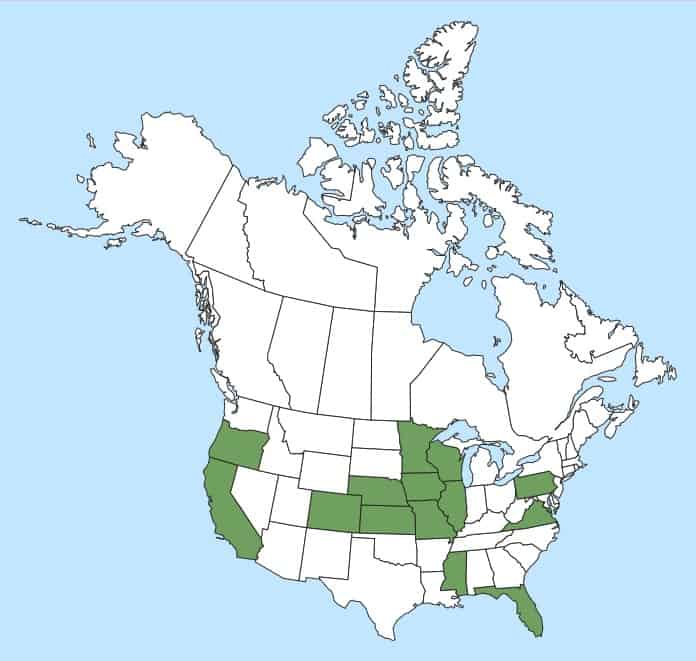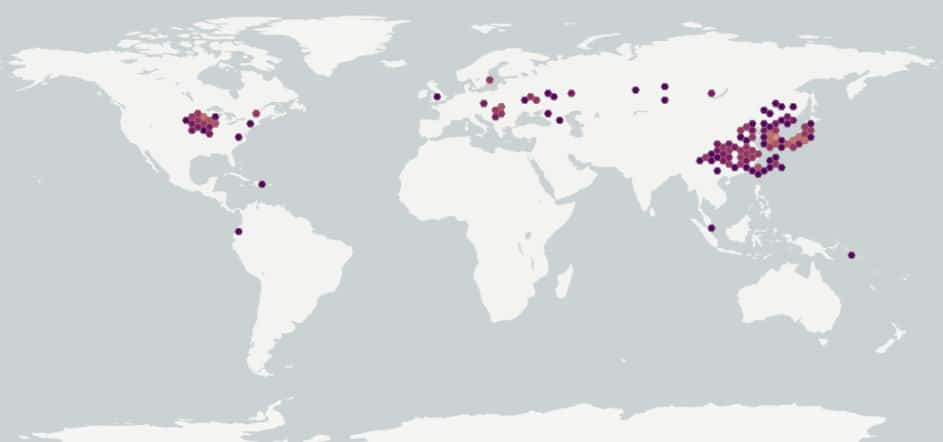Eriochloa villosa
Overview
Aperçu
Regulation :
Remarques Réglementation:
- CFIA Weed Seeds Order - Class 1: Prohibited Noxious Weed Seeds
- List of Pests Regulated by Canada
Regulation Notes:
Prohibited Noxious, Class 1 in the Canadian Weed Seeds Order (2016) under the Seeds Act. All imported and domestic seed must be free of Prohibited Noxious weed seeds.
Distribution :
Répartition :
Native to temperate and subtropical parts of eastern Asia. Reported to be introduced beyond its native range in the Caucasus region, western Siberia, southern Asia and Iran. Also introduced to the Ukraine, France and the United States (Darbyshire et al. 2003). This species has spread rapidly and is established in the Midwestern states (Shaw and Webster 1987). Limited populations are under official control in Quebec (Darbyshire et al. 2003).
Habitat and Crop Association :
Habitat et Cultures Associées :
Primarily grows in cultivated fields and can escape into adjacent open grassy places, hillsides, roadsides, along fences and ditches, and wastelands (Darbyshire et al. 2003). A problematic weed in Zea mays (corn) and Glycine max (soybeans) in the United States (Owen 1990).
Economic Use, cultivation area, and Weed Association :
Utilisation économique, zone de culture et association de mauvaises herbes :
Duration of Life Cycle :
Durée du cycle vital:
Annual
Dispersal Unit Type :
Type d’unité de dispersion :
Spikelet
General Information
RENSEIGNEMENTS GÉNÉRAUX
Eriochloa villosa was accidentally introduced into the United States in the 1940s (Owen 1990). In the Midwestern United States, where it interferes with Zea mays (corn) and Glycine max (soybean) crops, it has proven difficult to control.(Owen 1990).
This species has also appeared in climatic zones outside of the Midwest in places such as California and Pennsylvania, suggesting that the species can adapt to many climatic conditions (Darbyshire et al. 2003).
.Identification
Identification
-
Spikelet
Size
- Spikelet length*: 4.7 – 6.2 mm; width: 2.3 – 3.2 mm
*Note: minimum and maximum of 20 spikelets in a normal range of this species using image measurement (ISMA 2020)
Shape
- Egg-shaped or wide oval spikelet with a pointed tip, compressed in edge view
Surface Texture
- Glume and sterile floret of spikelet have a smooth surface texture with scattered long hairs
Colour
- The spikelet is shiny or glossy straw yellow with purple streaks
Other Features
Callus and Rachilla
- A ring of hard, yellow callus tissue at one end of the spikelet gives this species the common name of cup grass (Darbyshire et al. 2003)
- Long white hairs around the callus
Other features
- Glumes and sterile floret consistency is leathery and flexible
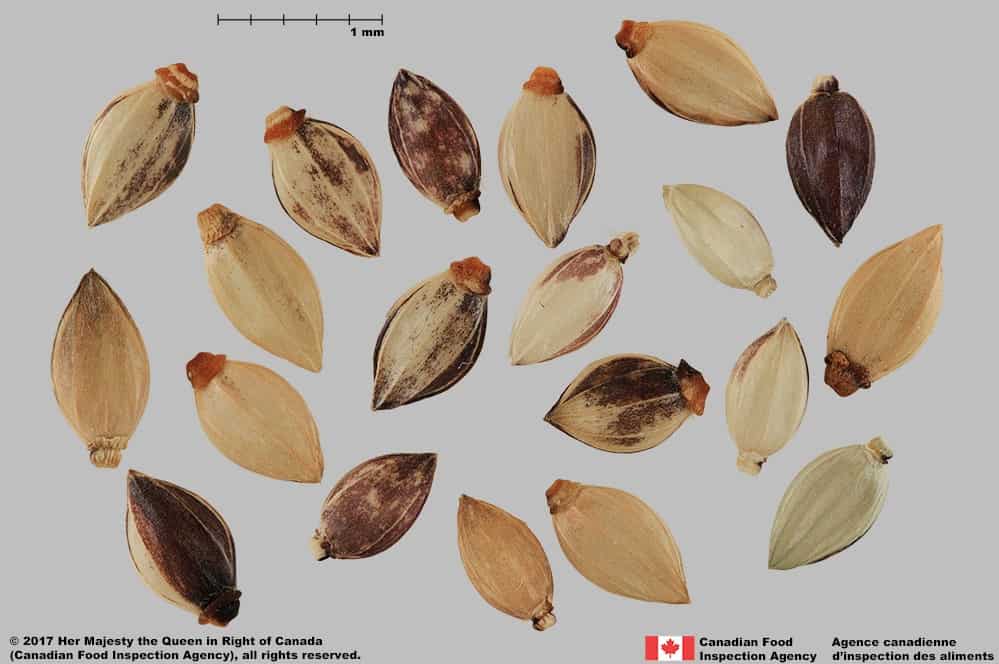
Woolly cup grass (Eriochloa villosa) spikelets

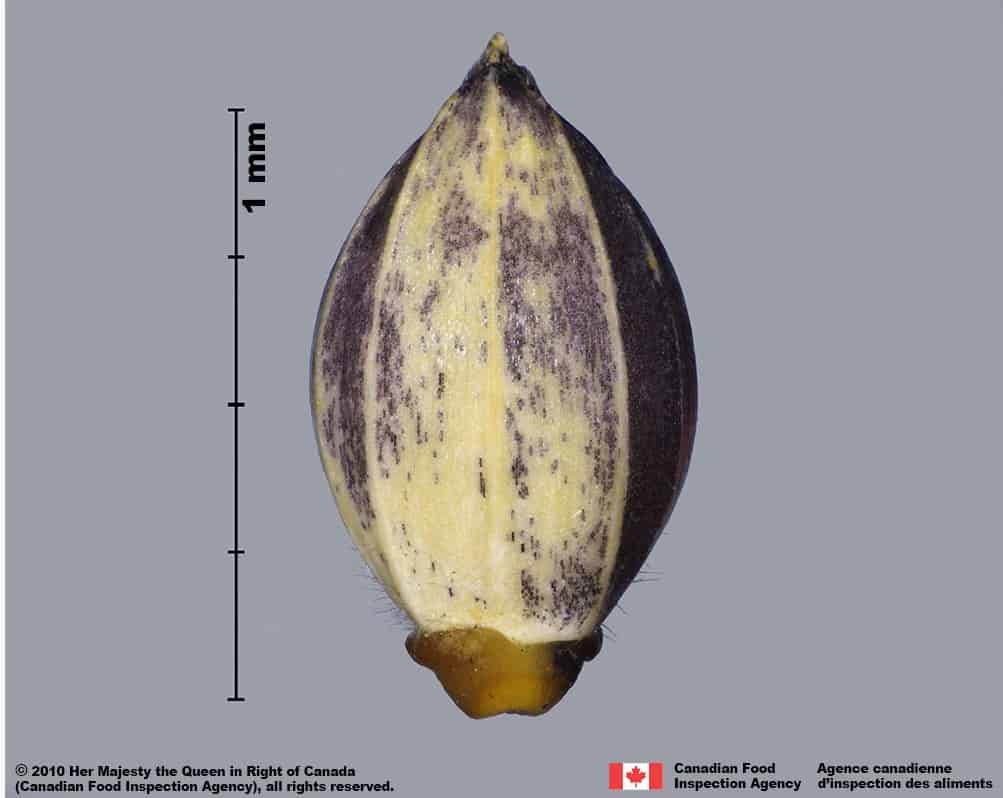
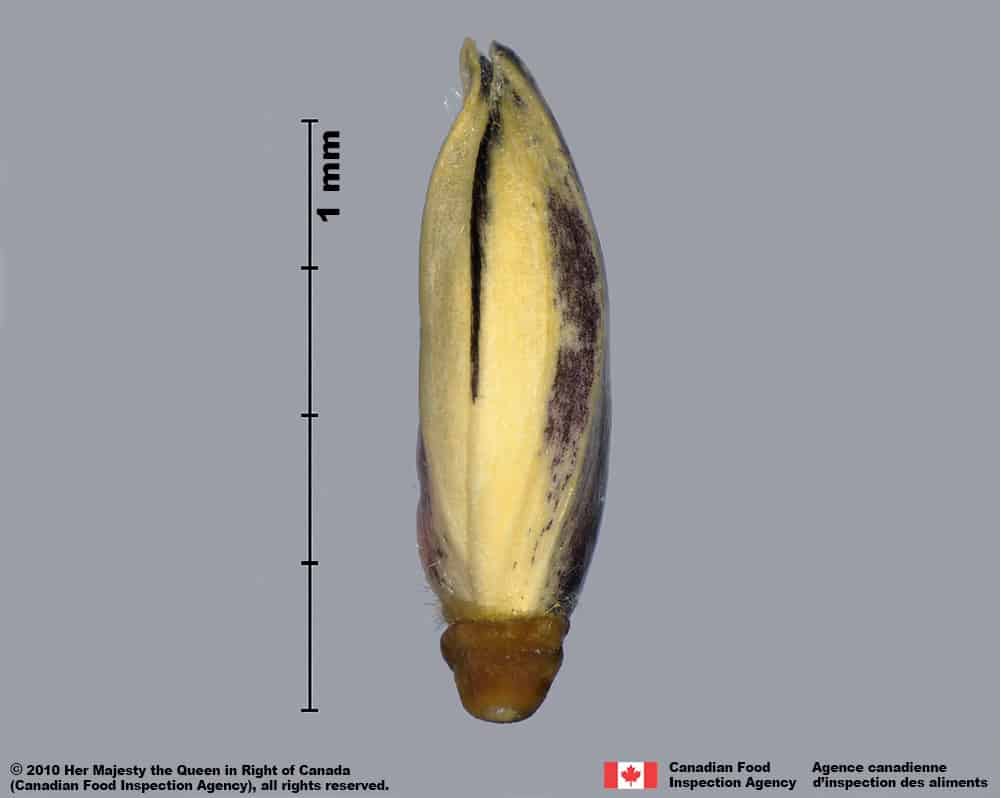
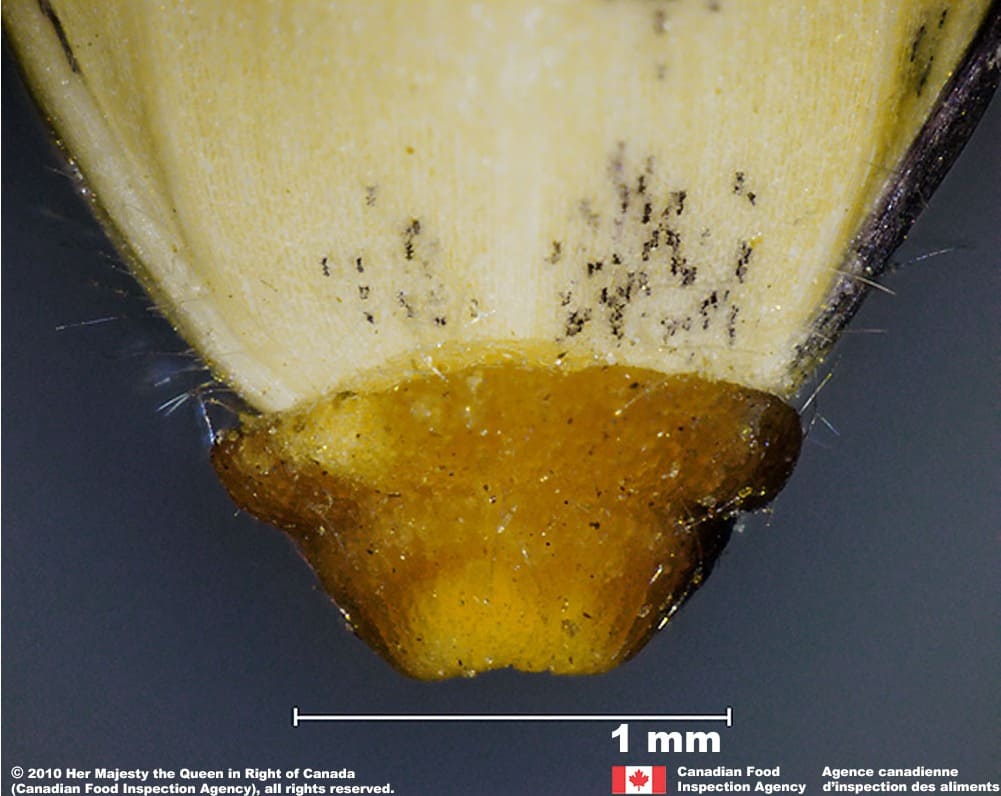
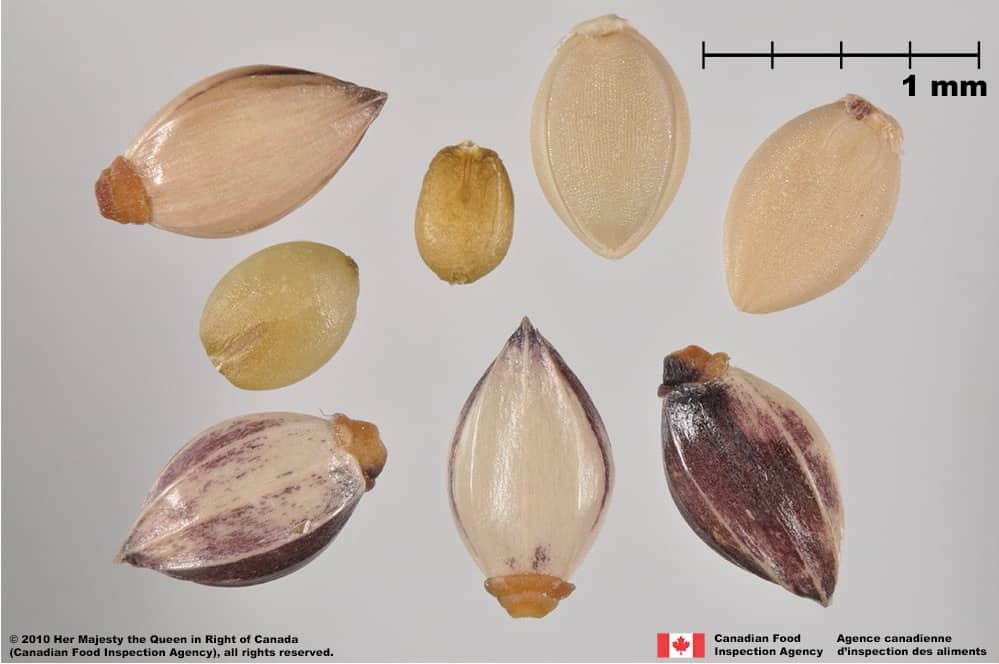
-
Floret
Size
- Floret length: 3.5 – 5.0 mm (Barkworth et al. 2003)
Shape
- Egg-shaped or oval floret with a pointed tip, compressed in edge view
Surface Texture
- Floret surface is hard and shell-like with grooved reticulation in a grid pattern
Colour
- Floret is shiny straw yellow
Other Features
Callus and Rachilla
- Callus end of floret is truncate with a ring of hard tissue
Other Features
- Floret consistency is hard and shell-like

Woolly cup grass (Eriochloa villosa) spikelets, florets and caryopses

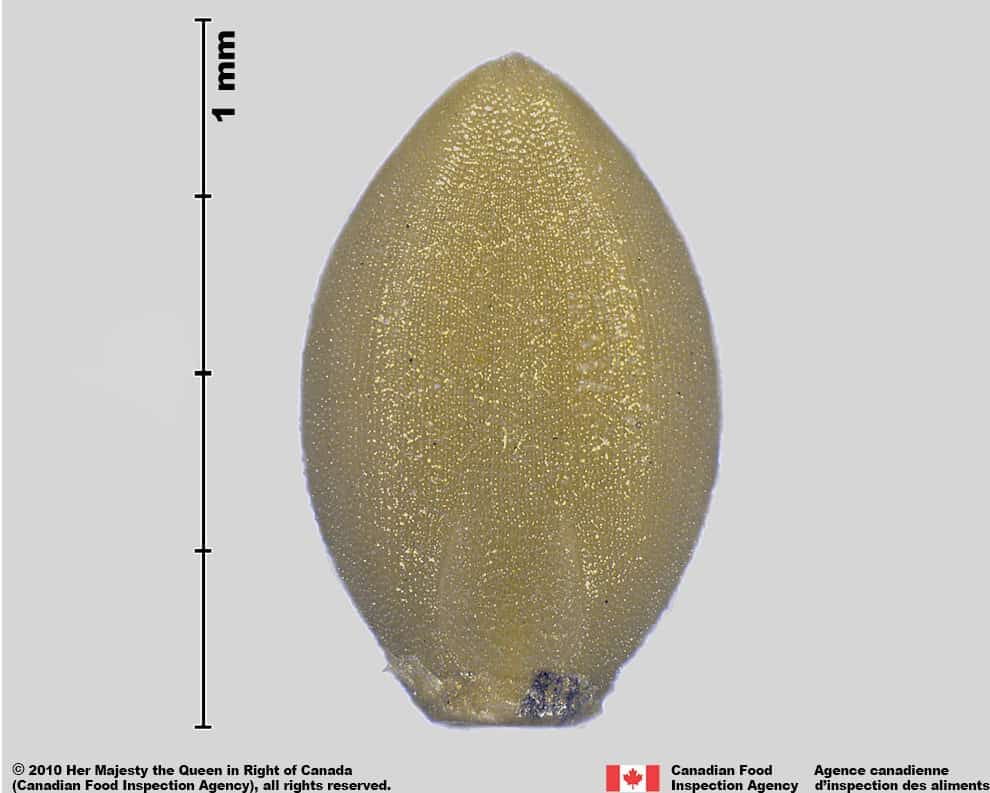
-
Caryopsis
Size
- Caryopsis length: 3.0 – 3.5 mm; width: 2.2-2.7 mm (Darbyshire et al. 2003)
Shape
- Caryopsis is oval or egg-shaped
Surface Texture
- Caryopsis surface is smooth textured
Colour
- Caryopsis is dull or shiny straw yellow or light brown
Other Features
- Hilum is a short, orange coloured line opposite the embryo

Woolly cup grass (Eriochloa villosa) spikelets, florets and caryopses

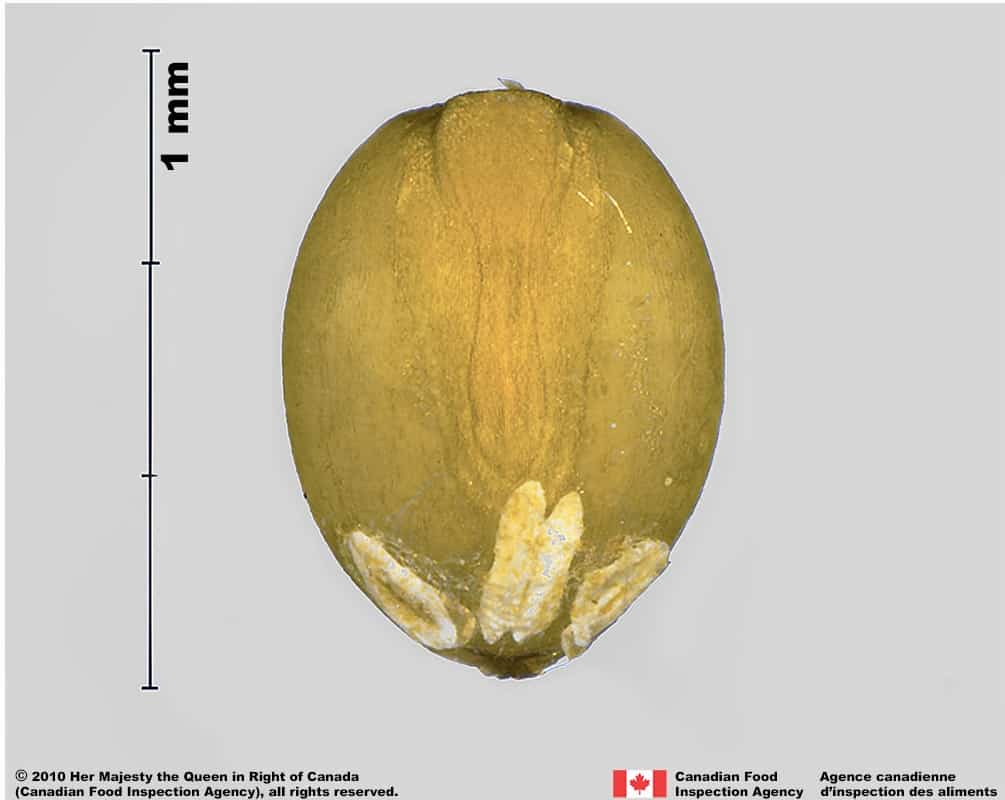
-
Embryo
Size
- Embryo is a rudimentary size compared to the caryopsis
Shape
- Embryo is egg or wedge-shaped, in a lateral position at wide end of the caryopsis
Endosperm
- Endosperm is hard and translucent whitish coloured
Identification Tips
CONSEILS POUR L’IDENTIFICATION
All species in this genus have a hard ring of tissue at one end of the spikelet. Eriochloa villosa spikelets can be distinguished by the wide oval or, egg-shaped spikelet and scattered surface hairs compared to other Eriochloa species that have more narrow oval-shaped spikelets and dense surface hairs.

Woolly cup grass (Eriochloa villosa) spikelet







Additional Botany Information
AUTRES RENSEIGNEMENTS BOTANIQUES
Flowers/Inflorescence
- Spikelets are in 2 rows on one side of the flowering stalk
- Florets are self-fertilizing and do not open for pollination (Darbyshire et al. 2003)
Vegetative Features
- The stems of this species produces many above and underground stems (Darbyshire et al. 2003)
- The leaves are wide (width: 3.0 – 15.0 mm), long-hairy and have asymmetrical wrinkling that identifies them before flowering (Darbyshire et al. 2003)
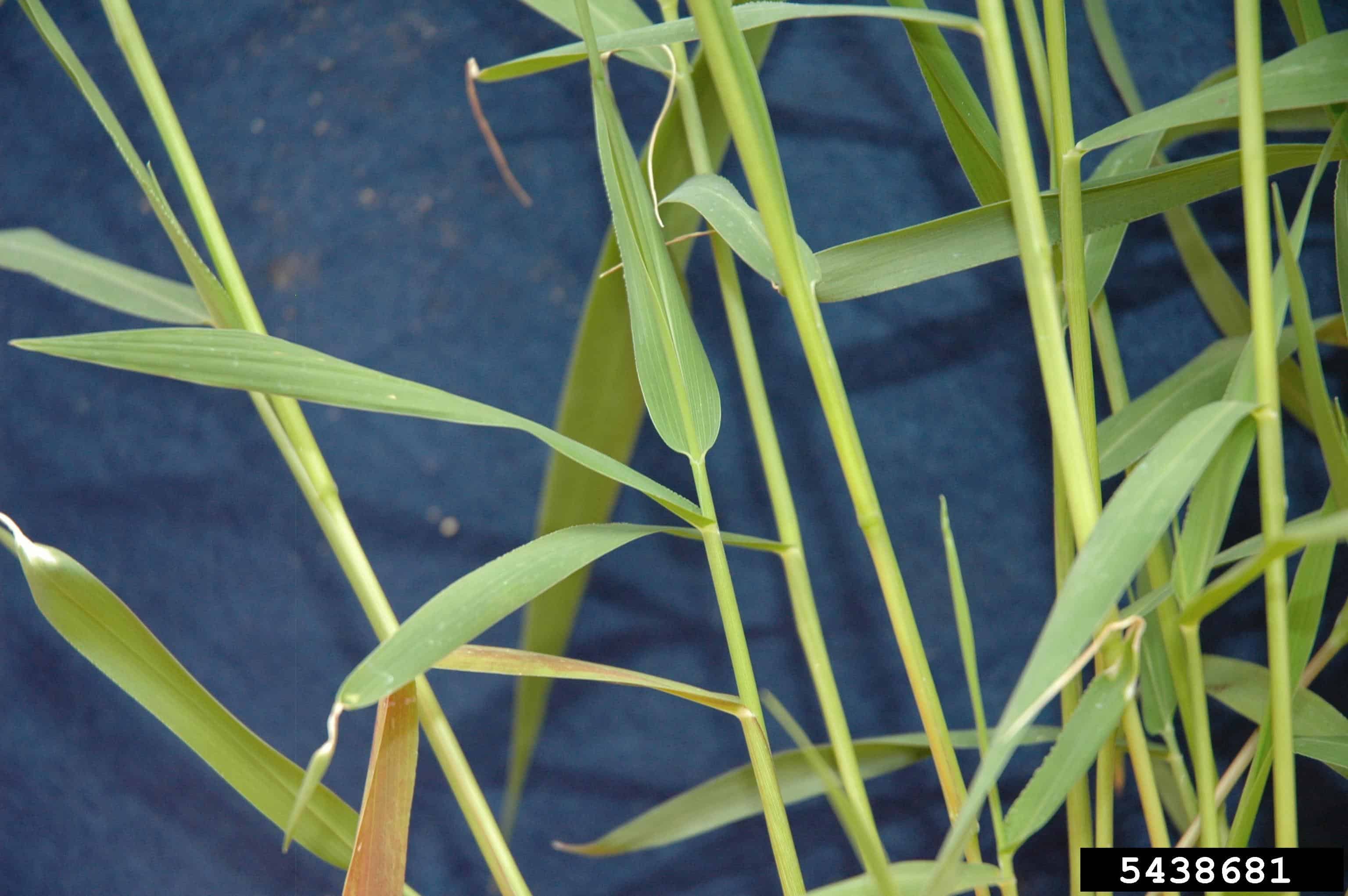
Eriochloa villosa (Bruce Ackley, The Ohio State University, Bugwood.org)

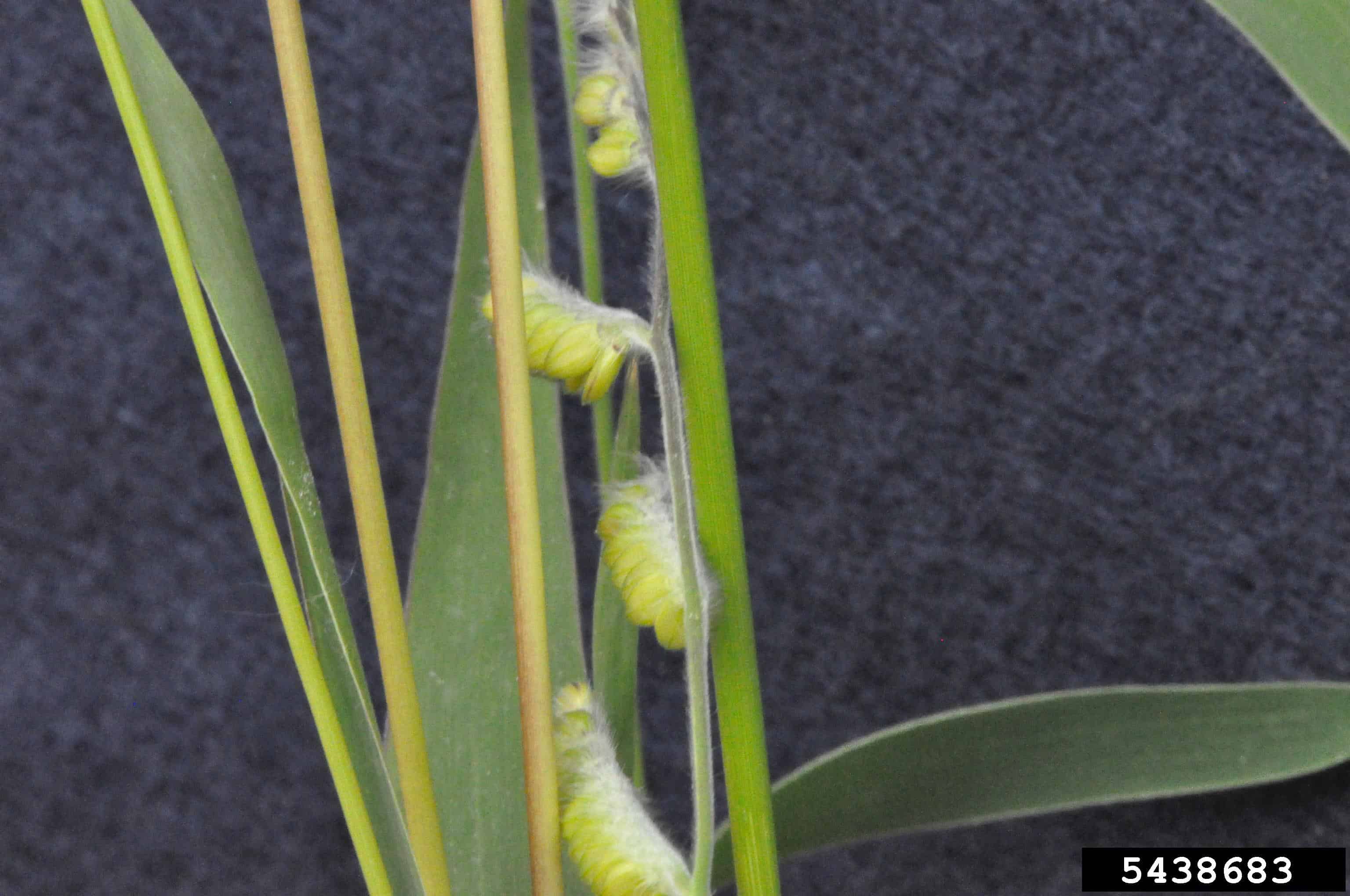
Similar Species
ESPÈCES SEMBLABLES
Similar species are based on a study of seed morphology of various species, and those with similar dispersal units are identified. The study is limited by physical specimen and literature availability at the time of examination, and possibly impacted by the subjectivity of the authors based on their knowledge and experience. Providing similar species information for seed identification is to make users aware of similarities that could possibly result in misidentification.
Paspalum laeve Michx
P. laeve spikelets are humped in edge view, glumes with a papery consistency without purple streaks, while E. villosa spikelets are more compressed in edge view, glumes are a leathery consistency with purple streaks. P. laeve does not have a ring of tissue at one end of the spikelet.
Eriochloa contracta Hitchc. (prairie cupgrass)
E. contracta spikelets are shorter and narrower (length: 3.5 – 4.5 mm; width: 1.2 – 1.7 mm, Barkworth et al. 2003) than E. villosa, and have an awn-tipped spikelet and fertile floret (Barkworth et al. 2003).
Click to select species
Cliquez pour sélectionner les espèces
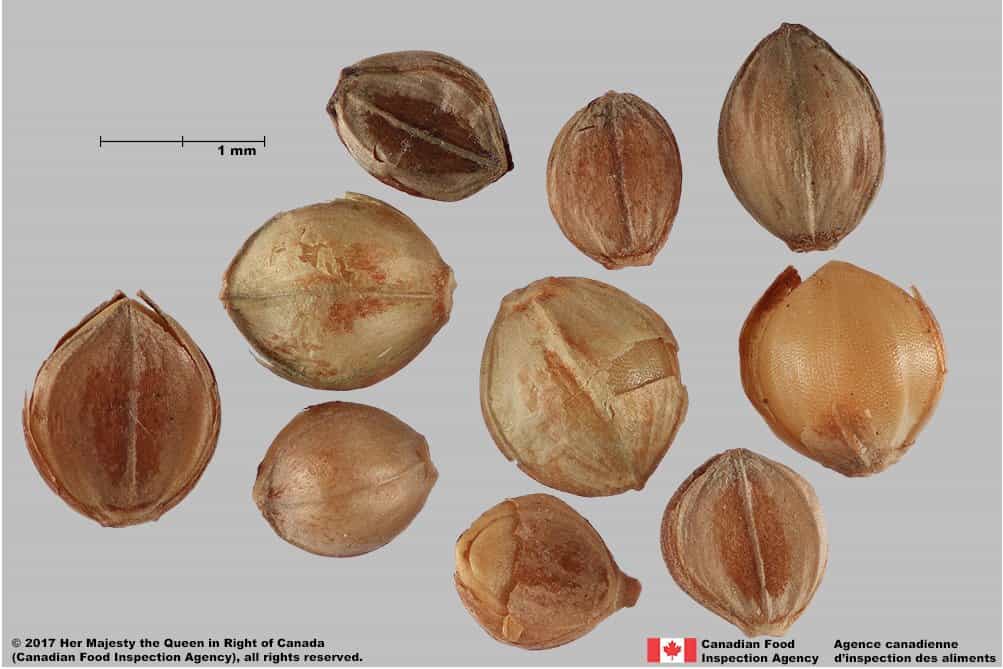
Paspalum laeve
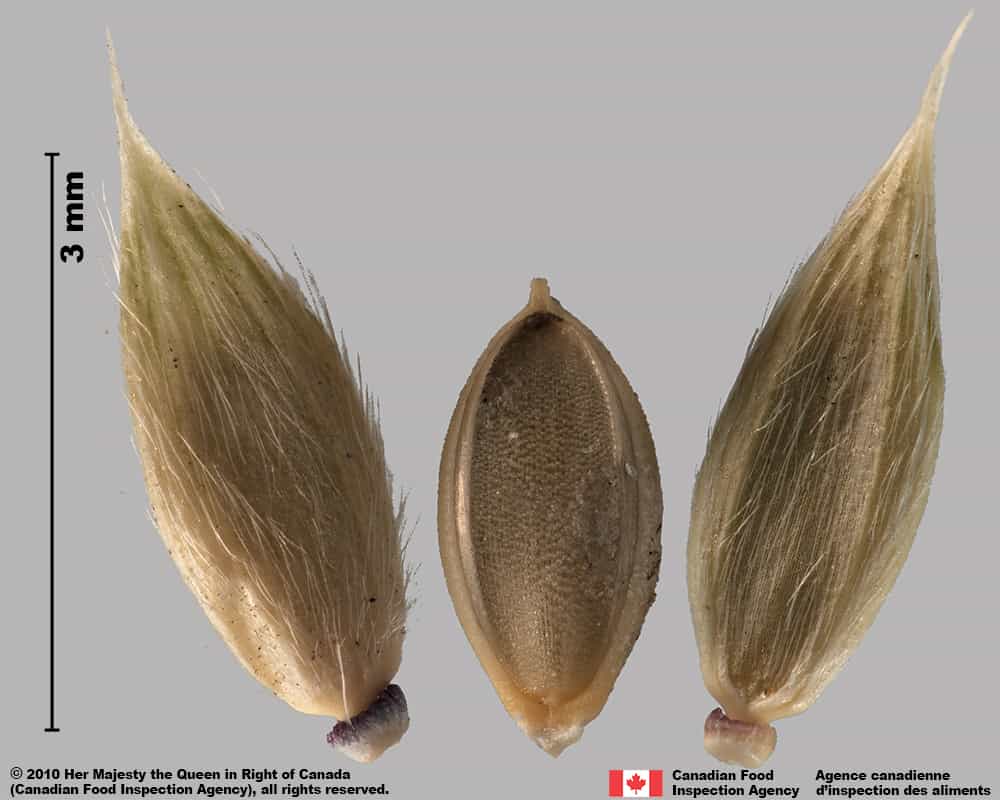
Eriochloa contracta
Comparison Window
Fenêtre de comparaison
MAIN SPECIES
ESPÈCES PRINCIPALES
Eriochloa villosa

Eriochloa villosa
Poaceae
Woolly cup grass (Eriochloa villosa) spikelets
MAIN SPECIES
ESPÈCES PRINCIPALES
Eriochloa villosa

Eriochloa villosa
Poaceae
Woolly cup grass (Eriochloa villosa) spikelets, florets and caryopses
MAIN SPECIES
ESPÈCES PRINCIPALES
Eriochloa villosa

Eriochloa villosa
Poaceae
Woolly cup grass (Eriochloa villosa) spikelet
MAIN SPECIES
ESPÈCES PRINCIPALES
Eriochloa villosa

Eriochloa villosa
Poaceae
Woolly cup grass (Eriochloa villosa) spikelet, side view
MAIN SPECIES
ESPÈCES PRINCIPALES
Eriochloa villosa

Eriochloa villosa
Poaceae
Woolly cup grass (Eriochloa villosa), spikelet base with ring of hardened tissue
MAIN SPECIES
ESPÈCES PRINCIPALES
Eriochloa villosa

Eriochloa villosa
Poaceae
Woolly cup grass (Eriochloa villosa) floret with inner bracts
MAIN SPECIES
ESPÈCES PRINCIPALES
Eriochloa villosa

Eriochloa villosa
Poaceae
Woolly cup grass (Eriochloa villosa) caryopsis
SIMILAR SPECIES
ESPÈCES SEMBLABLES
Paspalum laeve

Paspalum laeve
Poaceae
Field paspalum (Paspalum laeve) spikelets
SIMILAR SPECIES
ESPÈCES SEMBLABLES
Paspalum laeve
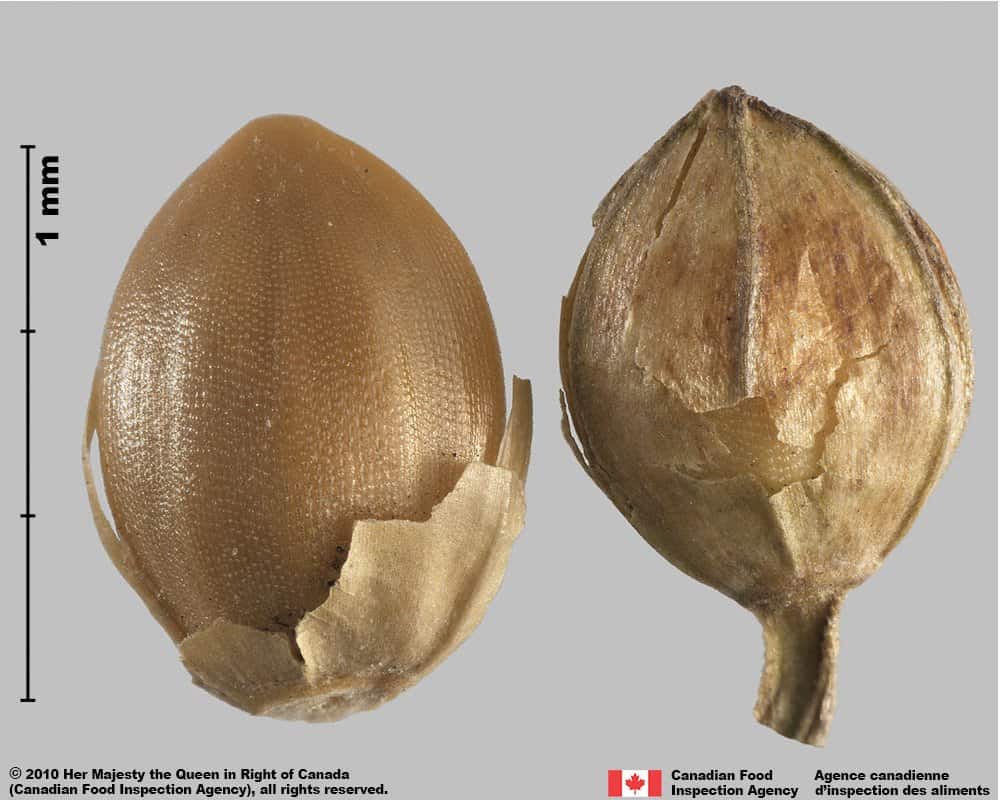
Paspalum laeve
Poaceae
Field paspalum (Paspalum laeve) spikelets
SIMILAR SPECIES
ESPÈCES SEMBLABLES
Paspalum laeve
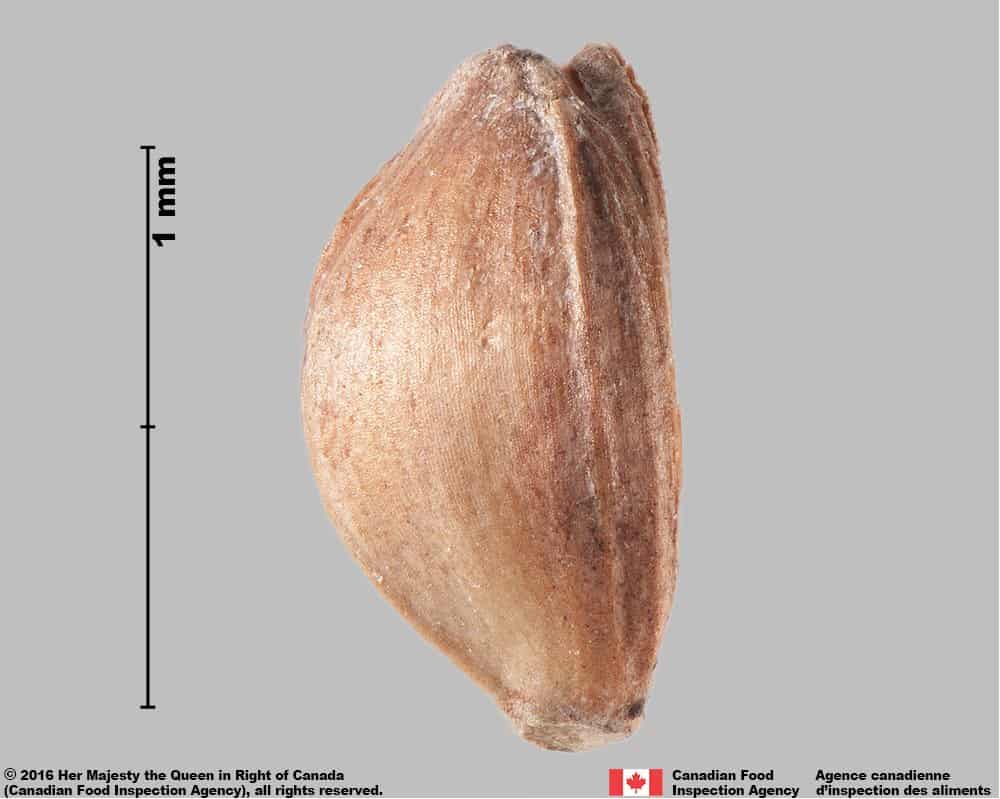
Paspalum laeve
Poaceae
Field paspalum (Paspalum laeve) spikelet, profile
SIMILAR SPECIES
ESPÈCES SEMBLABLES
Paspalum laeve
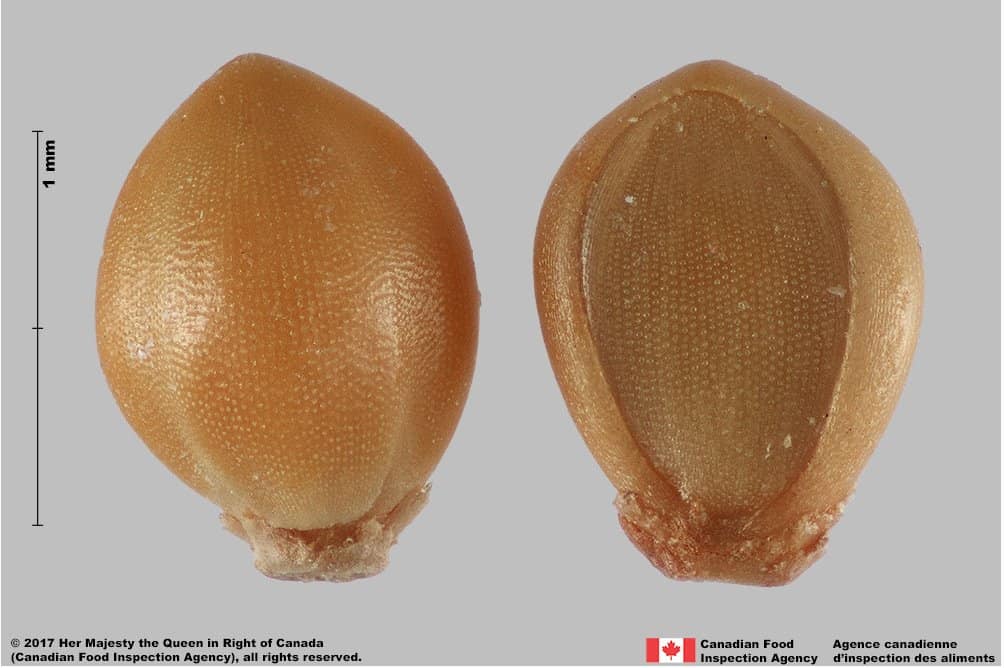
Paspalum laeve
Poaceae
Paspalum laeve florets
Need ID Help?
Besoin d’aide pour l’identification?
Reference(s)
Référence(s)
Barkworth, M. E., K. M. Capels, S. Long, and M. B. Piep, (eds.) 2003. Flora of North America Volume 25. Magnoliophyta: Commelinidae (in part): Poaceae, part 2. Oxford University Press, New York, New York.
Darbyshire, S. J., C.E. Wilson and K. Allison 2003. The biology of invasive alien plants in Canada. 1. Eriochloa villosa (Thunb.) Kunth. Canadian Journal of Plant Science. 87: 987-999.
eFloras. 2022. Electronic Floras. Missouri Botanical Garden, St. Louis, MO & Harvard University Herbaria, Cambridge, MA., http://www.efloras.org
Flora of North America (FNA) Editorial Committee, eds. 1993+. Flora of North America North of Mexico [Online]. 22+ vols. New York and Oxford. Accessed December 29, 2022.
Global Biodiversity Information Facility (GBIF) Secretariat. 2022. https://doi.org/10.15468/39omei Accessed via https://www.gbif.org/species/2702529 Accessed December 29, 2022.
Government of Canada (GC). 2016. Canadian Weed Seeds Order. https://laws-lois.justice.gc.ca/eng/regulations/SOR-2016-93/page-2.html (English) https://laws-lois.justice.gc.ca/fra/reglements/DORS-2016-93/page-2.html (French)
International Seed Morphology Association (ISMA). 2020. Method for Seed Size Measurement. Version 1.0. ISMA Publication Guide. https://www.idseed.org/authors/details/method_for_seed_size_measurement.html
Owen, M. D. K. 1990. Woolly cupgrass biology and management. Proceedings of the Crop Production Conference of Iowa State University 2: 61-72.
Shaw, R.B. and R.D. Webster. 1987. The genus Eriochloa (Poaceae: Paniceae) in North and Central America. Sida 12: 165-207.
U.S. Department of Agriculture-Agricultural Research Services (USDA-ARS). 2022. Germplasm Resources Information Network (GRIN), https://npgsweb.ars-grin.gov/gringlobal/taxon/taxonomysimple.aspx



